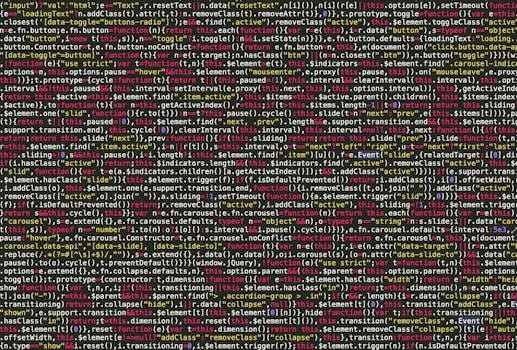This section introduces the essential CPT codes for ultrasound-guided thyroid biopsies, crucial for accurate billing and reimbursement․ Understanding these codes, including 10005 and 10006, is vital for healthcare providers performing these procedures․
Understanding the Basics of CPT Coding for Thyroid Procedures
CPT, or Current Procedural Terminology, codes are used to report medical procedures and services․ For thyroid procedures, especially those involving ultrasound guidance, it’s critical to use the correct codes to ensure proper billing․ These codes, like 10005 for the first lesion, are numerical identifiers for specific procedures․ Accurate coding is essential for healthcare providers to receive appropriate reimbursement for services provided․ The complexity of thyroid procedures often requires detailed knowledge of these codes and their proper application․
Primary CPT Codes for Ultrasound-Guided Thyroid FNA
This section details the primary CPT codes for ultrasound-guided fine needle aspiration (FNA) of the thyroid․ These codes are essential for billing and represent the specific procedures performed․
CPT Code 10005⁚ First Lesion Biopsy
CPT code 10005 specifically designates the fine needle aspiration biopsy, including ultrasound guidance, performed on the first lesion of the thyroid․ This code is used when a provider takes a sample from the initial nodule identified during an ultrasound-guided thyroid biopsy․ Accurate use of this code ensures that providers are appropriately reimbursed for the initial procedure․ It is important to note this code is used for the first lesion only, and additional lesions require a different code for proper billing․
CPT Code 10006⁚ Additional Lesion Biopsy
CPT code 10006 is used when performing fine needle aspiration biopsies, guided by ultrasound, on any additional thyroid lesions beyond the first one․ This code is an add-on code, meaning it must be billed in conjunction with the primary procedure code, 10005․ It accurately reflects the extra work and resources needed for sampling multiple lesions․ Correct usage of CPT code 10006 is critical for proper reimbursement for providers performing multiple biopsies during one session․ Note that modifier 59 is not needed․
Evolution of CPT Codes for Thyroid Biopsy
The coding for thyroid biopsies has evolved, with CPT code 10022 being replaced in 2019․ This change led to a more specific system, including codes like 10005 and 10006․
Transition from CPT Code 10022
Prior to 2019, CPT code 10022 was the primary code used for fine needle aspiration (FNA) biopsies with imaging guidance․ However, this code was deleted and replaced with a more detailed set of codes․ This transition reflects a need for more specific coding based on the number of lesions biopsied, and the imaging modality used․ The change introduced codes 10005 for the first lesion and 10006 for any additional lesion biopsied, when using ultrasound guidance․
Ultrasound Guidance Codes
CPT code 76942 is designated for ultrasonic guidance during needle placement, such as in biopsies․ This code is crucial for properly billing the imaging component of ultrasound-guided procedures, like thyroid biopsies․
CPT Code 76942⁚ Ultrasonic Guidance for Needle Placement
CPT code 76942 specifically denotes the use of ultrasonic guidance for needle placement, a common practice during thyroid biopsies․ This code is essential when billing for the imaging component of such procedures, ensuring that the radiologic assistance in guiding the needle is accurately represented․ It’s crucial to remember that this code is applied when ultrasound is utilized to precisely direct the needle, thereby aiding in the accuracy of the biopsy or aspiration․ Proper use of CPT code 76942 helps in obtaining appropriate reimbursements for the services provided․

Distinction between Biopsy and FNA
This section clarifies the difference between a biopsy and fine needle aspiration (FNA) in the context of thyroid procedures․ Understanding these differences is critical for accurate CPT coding․
FNA vs Core Needle Biopsy⁚ CPT Code Differences
Fine Needle Aspiration (FNA) uses a thin needle to collect cells, coded with 10005 for the first lesion and 10006 for subsequent ones when ultrasound guided․ In contrast, core needle biopsies involve a larger needle to obtain tissue samples, and have different CPT codes․ It is important to distinguish between these two procedures as the codes are not interchangeable and reflect different sampling techniques․ These differences impact coding and reimbursement practices․

Documentation Requirements for Accurate Coding
Detailed documentation is crucial for accurate CPT coding of thyroid biopsies․ It should include the number of lesions biopsied, guidance method, and any additional services rendered, ensuring proper reimbursement․
Importance of Detailed Procedure Documentation
Meticulous documentation of thyroid biopsy procedures is paramount for accurate coding and billing․ This includes specifying the exact location, size, and number of lesions biopsied․ Furthermore, the documentation should clearly state if ultrasound guidance was employed, and which CPT codes were utilized․ Such detail is not just for compliance; it is essential for ensuring that healthcare providers receive proper reimbursement and avoid potential claim denials․ Comprehensive notes also aid in the continuity of patient care and are valuable for future reference․
Thyroid Ultrasound CPT Codes
This section focuses on CPT code 76536, which is used for thyroid ultrasound imaging․ This code is crucial for billing when ultrasound is used for diagnostic purposes․
CPT Code 76536⁚ Thyroid Ultrasound Imaging
CPT code 76536 is specifically designated for thyroid ultrasound imaging, a crucial diagnostic tool․ This code covers real-time imaging of the thyroid gland, including documentation of the findings․ It’s used for assessing the thyroid’s structure, identifying nodules or cysts, and guiding further procedures․ This code is often used prior to a biopsy to help locate the suspicious area․ It is important to note that this code is for the imaging procedure only and does not include any interventional component․

Contrast-Enhanced Ultrasound and Biopsy
This section will cover coding considerations when using contrast during ultrasound-guided thyroid biopsies․ The use of contrast agents may require additional or modified CPT coding practices which should be followed․
Coding Considerations for Contrast Use
When contrast is utilized during a thyroid ultrasound and biopsy, it is crucial to understand the specific coding implications․ The selection of the appropriate CPT code depends on the type of ultrasound performed and whether contrast is used, as well as the complexity of the imaging․ If contrast is administered during the biopsy procedure, additional codes may apply․ Careful documentation is essential to ensure accurate coding and proper reimbursement for these enhanced procedures․ These nuances will be detailed․

Coding for Multiple Lesions
When multiple thyroid lesions are biopsied, proper use of modifiers and add-on codes, like CPT code 10006, is crucial․ This ensures accurate billing for each additional lesion beyond the first․
Proper Use of Modifiers and Add-on Codes
Accurate coding for multiple lesions requires understanding of modifiers and add-on codes․ CPT code 10006 is specifically for each additional thyroid lesion biopsied after the initial one (CPT code 10005)․ Modifier 59 is typically not needed for code 10006, as its description covers an additional lesion․ Proper documentation is vital to ensure correct coding and reimbursement․ Understanding these nuances will help avoid billing errors and ensure healthcare providers are paid correctly for their services․
Billing and Reimbursement Considerations
Ensuring accurate claims processing requires a thorough understanding of CPT codes for thyroid biopsies․ Proper coding, including modifiers, is crucial for obtaining appropriate reimbursement from payers․
Ensuring Accurate Claims Processing
Accurate claims processing for ultrasound-guided thyroid biopsies hinges on correct CPT code selection and the proper use of modifiers․ Billing staff must stay updated on changes to coding guidelines, particularly regarding the distinction between the first and subsequent lesions, often represented by codes like 10005 and 10006․ Thorough documentation, including ultrasound findings and the number of lesions biopsied, is essential for supporting claims․ Understanding payer-specific rules is also key to avoiding claim denials and ensuring timely reimbursement for services rendered․ Attention to detail will maintain financial stability․
Point of Care Ultrasound (POCUS) Coding
This section explores CPT coding for Point of Care Ultrasound (POCUS) in thyroid procedures․ Proper coding and billing for POCUS scans requires knowledge of specific ultrasound CPT codes and billing regulations․
Coding and Billing for POCUS in Thyroid Procedures
When using Point of Care Ultrasound (POCUS) for thyroid assessments and biopsies, accurate coding is crucial for proper reimbursement․ If your department utilizes POCUS with a formal review process, consider coding and billing for these scans․ This requires understanding the various ultrasound CPT codes and their potential payment amounts․ POCUS in thyroid procedures, often used for guidance, involves specific CPT codes that must be accurately assigned to ensure proper claims processing and prevent denials․
Additional Resources and Updates
Staying informed on CPT code changes is crucial for accurate billing․ Healthcare providers should regularly consult official coding resources for the latest updates and guidelines, especially for thyroid procedures․
Staying Informed on CPT Code Changes
Keeping up-to-date with the latest CPT code revisions is essential for healthcare professionals involved in ultrasound-guided thyroid biopsies․ The American Medical Association (AMA) regularly updates these codes, and changes can significantly impact billing and reimbursement․ Providers must monitor official coding publications, such as the CPT manual and payer-specific guidelines, to ensure compliance and avoid claim denials․ Resources like coding seminars, online forums, and professional organizations offer valuable insights into these changes, and staying informed is a continuous effort․
